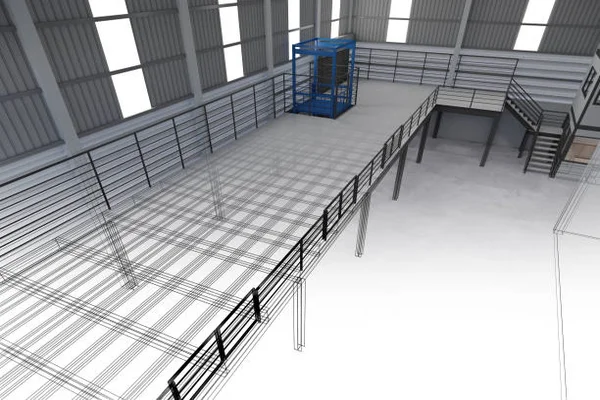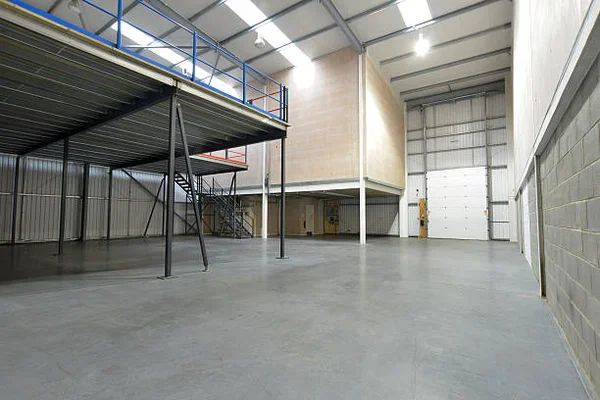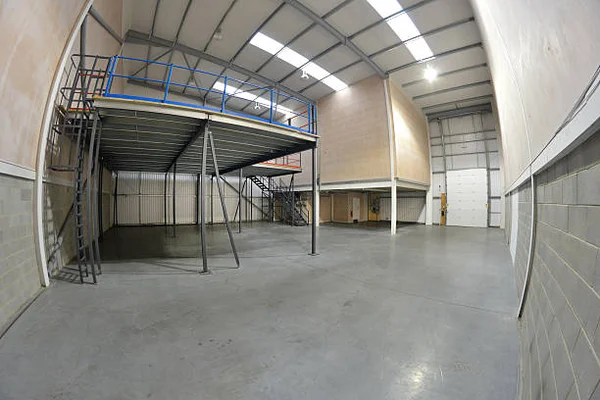prefab mezzanine for maximizing space

prefab mezzanine offers a versatile and efficient solution for maximizing space in various settings, from industrial warehouses to retail stores. These pre-engineered, modular structures are designed to provide additional floors quickly and cost-effectively, without the need for extensive construction. In this article, we’ll explore the benefits of prefab mezzanines, their applications, and how they can enhance the functionality of your space.
What does mezzanine mean?
A prefab mezzanine is an intermediate floor in a building, typically situated between the main floors.
It often does not extend over the entire floor space of the building and is usually open to the floor below.
Mezzanines are commonly found in large, open spaces like warehouses, industrial buildings, theaters, or shopping centers, where they provide additional space for storage, offices, or seating without requiring a full additional floor.
They can also be used in residential homes to create a loft or extra living space.

prefab mezzanine
What is the best material for a mezzanine floor?
The best material for a mezzanine floor depends on the intended use, load requirements, and the environment in which it will be installed.
read more: metal works dubai
Here are some commonly used materials and their advantages:
Steel:
- Advantages:
Strong, durable, and capable of supporting heavy loads.
Steel mezzanine floors can be designed for a variety of applications, including industrial storage and office spaces.
- Best For:
Industrial environments, warehouses, and areas requiring high load-bearing capacity.
Concrete:
- Advantages:
Extremely durable and capable of supporting very heavy loads.
It also provides excellent sound insulation and fire resistance.
- Best For:
Permanent installations in industrial settings, commercial buildings, or places where heavy machinery or equipment used.
Grated Steel or Aluminum Decking:
- Advantages:
Provides good ventilation and allows light and fluids to pass through, which is useful in certain industrial environments. Aluminum is also lightweight and corrosion-resistant.
- Best For:
Environments where ventilation, drainage, or light penetration is important, such as in certain industrial or outdoor settings.
read more: steel fabrication uae
Composite Materials:
- Advantages:
Combines the benefits of different materials, such as steel and concrete, to provide strength, durability, and reduced weight.
Some composite materials also offer enhanced fire resistance.
- Best For:
Commercial or industrial settings where a balance between weight, strength, and fire resistance needed.
The choice of material should be based on the specific requirements of the mezzanine, including load capacity, fire resistance, cost, and aesthetic preferences.
Consulting with a structural engineer or designer recommended to ensure the selected material meets all necessary safety and performance criteria.
What is the purpose of a mezzanine floor?
A mezzanine floor serves several purposes depending on the setting in which it installed:
Maximizing Space:
One of the primary purposes of a mezzanine floor is to maximize the use of vertical space within a building.
By adding an intermediate floor, you can effectively increase the usable area without the need for additional square footage or expanding the building.
Additional Storage:
In warehouses, industrial facilities, and retail spaces, mezzanine floors often used to create extra storage space.
This allows businesses to store more inventory or equipment without needing a larger building.
Creating Office Space:
Mezzanines can provide additional office space within industrial or commercial environments.
This allows businesses to have administrative or operational offices close to production or storage areas.
Improving Workflow:
In industrial settings, mezzanine floors can help improve workflow by separating different functions within the same space.
For example, storage, packaging, and administrative tasks organized on different levels, streamlining operations.
Increased Functionality:
Mezzanine floors can add multifunctionality to a space.
For example, in a retail store, a mezzanine used for a cafe, additional display areas, or special events, making the space more versatile.
we help you find the prefab mezzanine floor with sama

prefab mezzanine
At Sama, we help you find the perfect prefab mezzanine floor solution to optimize your space.
Whether you need additional storage, office space, or a customized design to enhance your facility, our team provides high-quality, durable, and efficient mezzanine floors tailored to your needs.
Trust Sama to deliver the ideal mezzanine floor that meets your specific requirements, ensuring both functionality and aesthetic appeal.
contact us and have your services with sama
Prefab mezzanine cost
The cost of a prefab mezzanine floor varies based on several factors, including the size of the mezzanine, the materials used, the complexity of the design, and any additional features or customizations required.
Generally, costs influenced by factors such as load capacity, floor finish, installation requirements, and the specific needs of the project.
For a more accurate estimate, it’s best to consult with suppliers or manufacturers who can provide a quote based on your specific requirements and project scope.
In conclusion, prefab mezzanine provides a practical and efficient way to expand and optimize space without the complexities of traditional construction. Their modular design allows for quick installation, flexibility in use, and cost-effectiveness, making them a valuable solution for both commercial and industrial applications.
By incorporating a prefab mezzanine, you can enhance the functionality of your space, increase storage or operational areas, and improve overall efficiency. Whether you’re looking to expand your warehouse, retail space, or office, prefab mezzanines offer a smart and streamlined approach to meet your needs.

